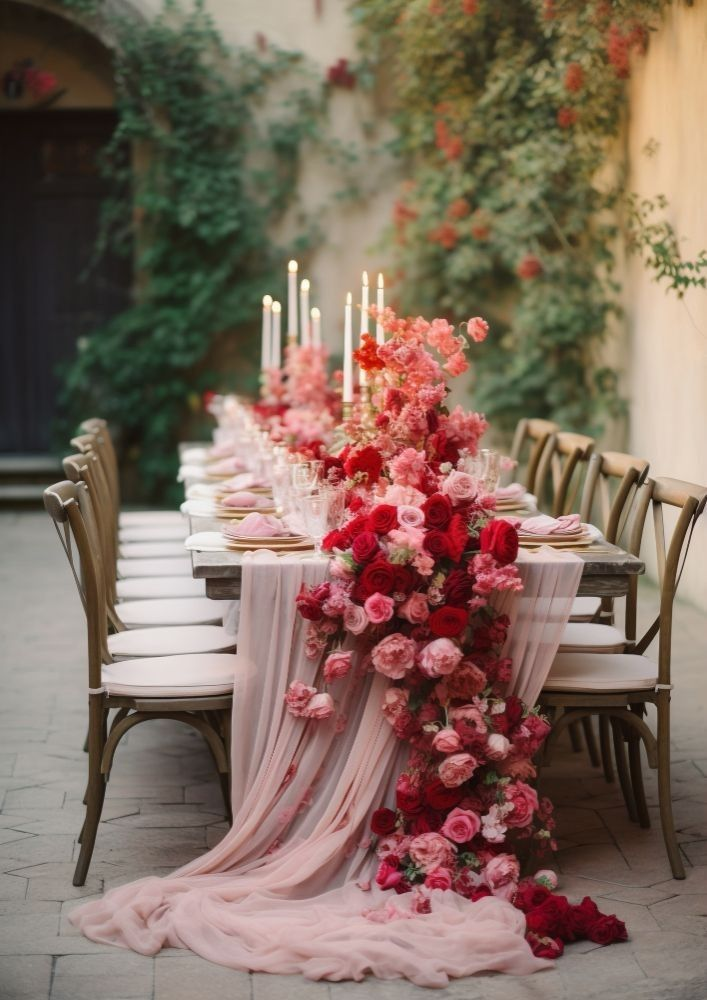
Celebrate Love: The Hottest Wedding Trends for LGBTQ Couples in 2025
Discover the latest wedding trends for LGBTQ couples in 2025, from personalized themes to sustainable practices that embrace love and inclusivity.
1. Rise of Personalized Wedding Themes
The wedding landscape for LGBTQ couples in 2025 is increasingly characterized by personalized themes that reflect the unique stories and identities of the couples. Gone are the days when traditional motifs dominated; instead, couples are opting for themes that resonate with their individual journeys, such as a “travel theme” for avid adventurers or a “literary theme” for book lovers. An exciting trend is the use of interactive vow journals, which allow guests to contribute their hopes and advice, fostering a communal experience that enhances the depth of personal connections during the ceremony.
Moreover, fusion rituals are gaining traction, where couples blend cultural practices, such as combining handfasting and sand ceremonies. This approach not only celebrates their individual backgrounds but also promotes inclusivity. For instance, a couple might incorporate a traditional Native American unity ceremony, symbolizing their shared heritage, alongside modern elements that reflect their personal love story.
2. Importance of Inclusivity in Wedding Planning
Inclusivity is at the forefront of wedding planning for LGBTQ couples in 2025, emphasizing clear communication and the use of inclusive language to ensure all guests feel valued. This is particularly vital in managing expectations and fostering an environment where everyone can celebrate freely. Couples are encouraged to seek out vendors who provide LGBTQ+-friendly services and actively support LGBTQ+ rights, creating a more welcoming and positive experience for everyone involved.
Moreover, representation in wedding media plays a crucial role in helping couples see their identities reflected in the planning process. This not only validates their experiences but also inspires them to embrace their uniqueness. Community love circles are becoming popular, where guests share personal stories and experiences, further enhancing the sense of belonging and connectedness among attendees.
3. Popular Colors and Decor Styles
In 2025, vibrant colors are making a splash in LGBTQ weddings, with couples embracing bold palettes that resonate with their personal styles. From bright hues to pastel shades, the color choices reflect each couple’s personality, making their celebrations truly unique. Immersive decor options such as augmented reality (AR) projections and dynamic lighting are being utilized to create engaging reception environments, enhancing the overall atmosphere of the event.

Eco-friendly decor elements are also gaining popularity, allowing couples to honor the environment while creating beautiful settings. For example, a couple might choose to use biodegradable confetti or local flowers in their arrangements, showcasing their commitment to sustainability. Sensory experiences , like innovative lighting and soundscapes, are becoming essential for enhancing the emotional atmosphere of ceremonies, allowing guests to fully immerse themselves in the celebration.
4. Trends in Wedding Attire for LGBTQ Couples
In 2025, wedding attire for LGBTQ couples is increasingly reflecting a spirit of personal expression and individuality. Couples are gravitating toward gender-fluid designs and accessories from LGBTQ+ designers, allowing them to break free from traditional norms. Bridal fashion is showcasing statement sleeves, elevated minimalism, and vibrant colors, offering a diverse range of choices that cater to all couples.

Two-piece ensembles are gaining traction, providing versatility and creativity in fashion choices. For instance, a couple might mix and match a tailored jacket with a flowing skirt or stylish trousers, blending traditional and modern styles. Inclusive sizing options from designers are also becoming more prevalent, ensuring that all couples can find attire that fits them beautifully and reflects their unique style.
5. Unique Venues for LGBTQ Weddings
When it comes to venues, 2025 is seeing a rise in unconventional locations that cater specifically to LGBTQ weddings. Urban hotels, beach resorts, and historic landmarks are popular choices, but couples are also opting for unique spaces like art galleries or museums that offer distinctive backdrops for their ceremonies. Such venues not only provide a stunning aesthetic but also foster an environment that embraces diversity and inclusivity.
Destination weddings remain appealing, especially at venues known for being safe spaces for LGBTQ couples. Outdoor weddings are also on the rise, utilizing natural settings such as parks and gardens to create memorable backdrops that enhance the beauty of the ceremony. Many couples are considering venues that provide on-site accommodations to enhance convenience for their guests, ensuring everyone feels comfortable and welcomed.
6. Innovations in Wedding Photography and Technology
As technology continues to evolve, so do the ways couples can incorporate it into their weddings. Innovations like livestreaming and virtual reality allow remote guests to participate interactively in ceremonies, ensuring that loved ones who cannot attend in person still feel included. Tech-savvy keepsakes, such as drones and AI photo booths, create memorable mementos that capture the essence of the day in unique ways.
Digital guest books are becoming popular, allowing real-time contributions from attendees and offering a modern twist on traditional keepsakes. Couples are also utilizing social media platforms to share their wedding journey, creating personalized hashtags that guests can use to engage with the celebration. These tech innovations enhance guest experience and create lasting memories that couples can cherish.
7. Emphasis on Sustainability
Sustainability is increasingly becoming a core focus for LGBTQ weddings in 2025, with couples encouraged to adopt eco-friendly practices that minimize their environmental impact. Strategies like the Leave No Trace principle and supporting local businesses are becoming integral to wedding planning. Smaller guest counts are preferred, fostering intimate interactions and reducing the environmental footprint of larger events.
Couples are choosing sustainable options for decor and catering, reflecting a commitment to social responsibility. For example, they might select seasonal ingredients for their menus or opt for decor made from recycled materials. Wedding registries are also shifting towards experiences rather than physical gifts, allowing guests to contribute to meaningful memories that last a lifetime.





